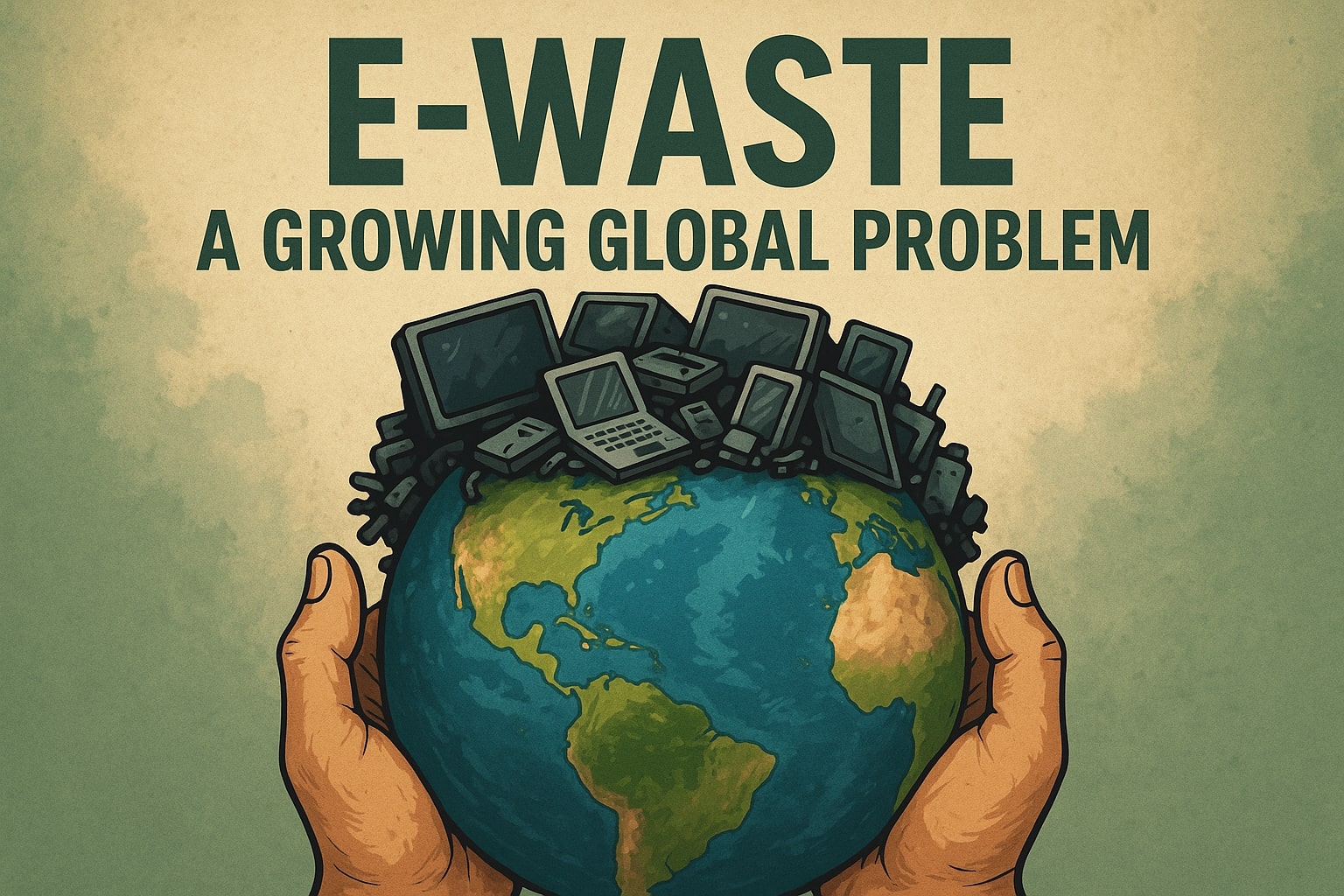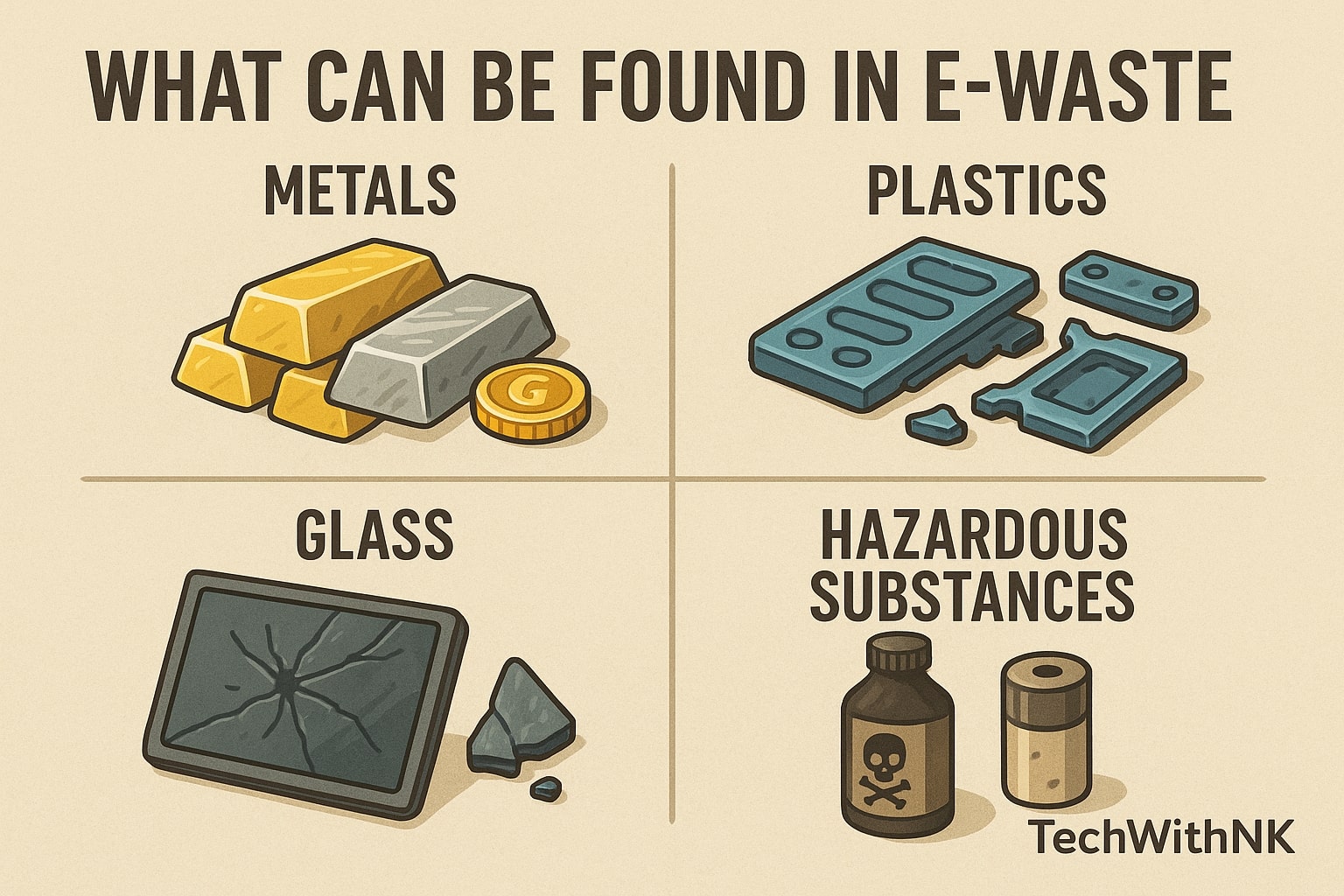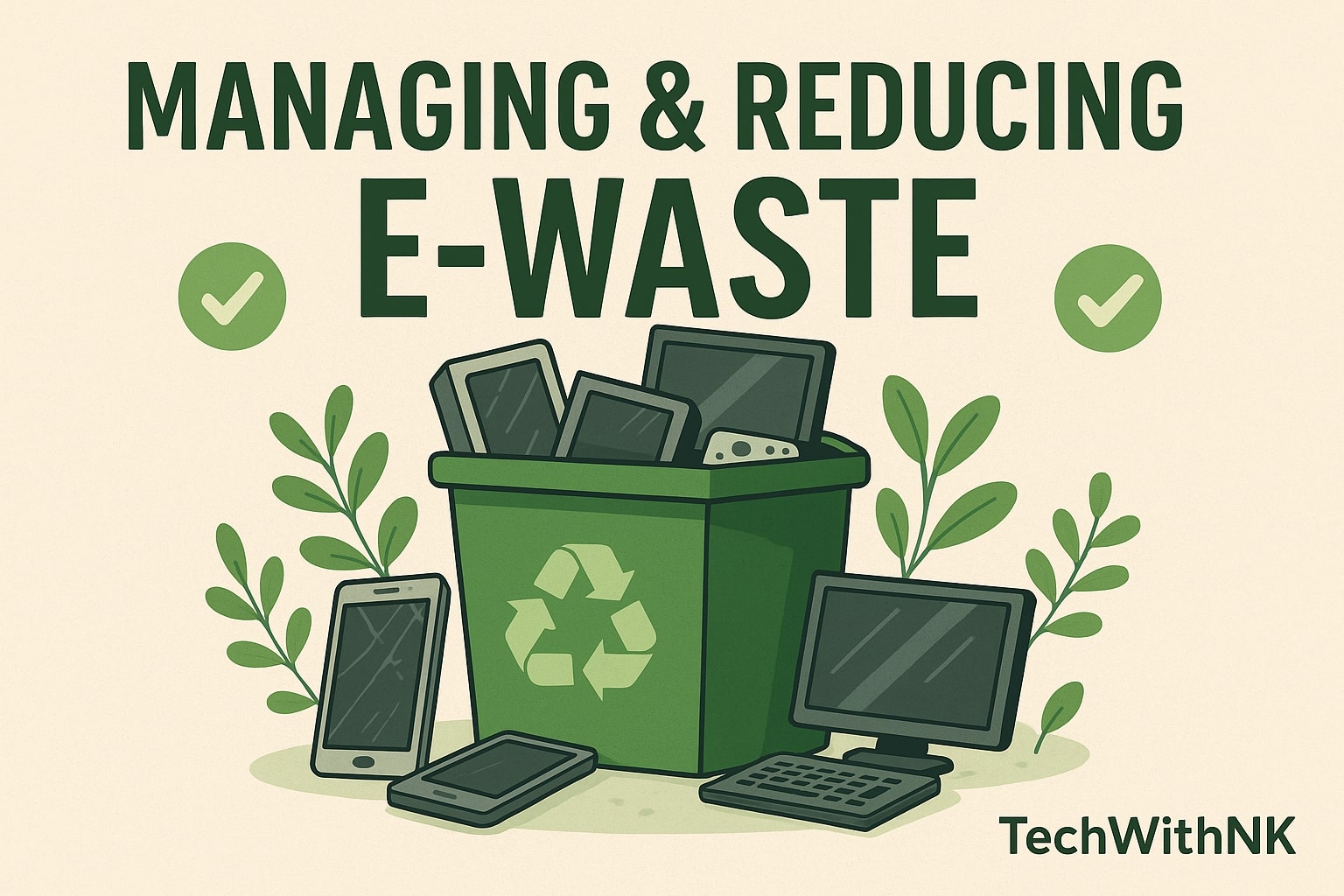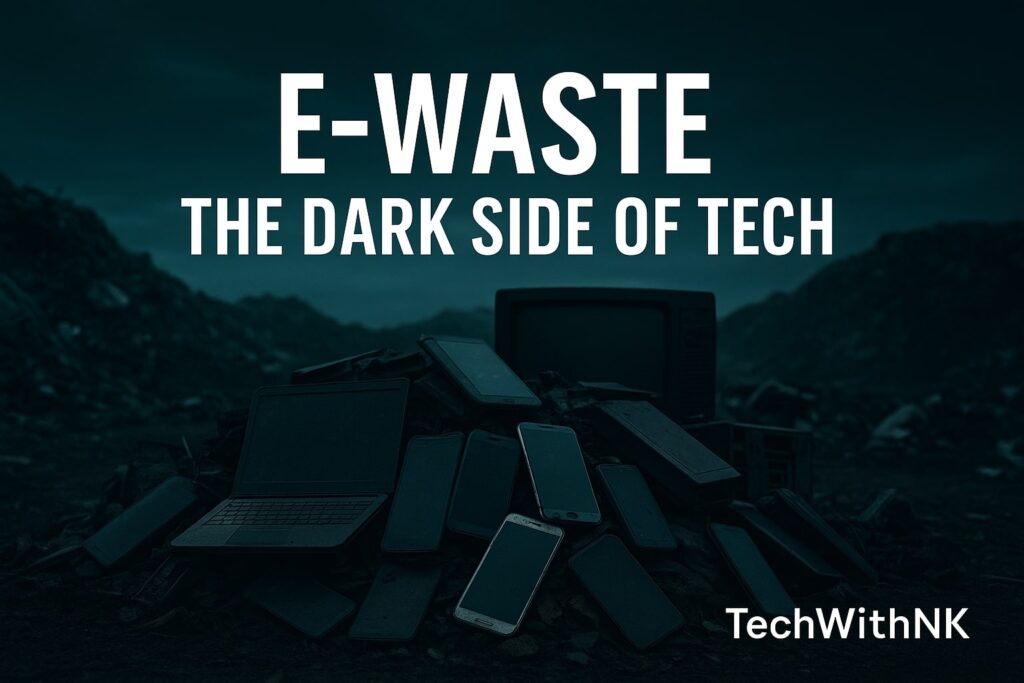Table of Contents
ToggleIntroduction
Technology has become an inseparable part of our lives. From smartphones to laptops, from smart TVs to wearable devices, we are surrounded by digital innovation. But behind this glossy world lies a darker reality—electronic waste (e-waste). With millions of gadgets discarded each year, e-waste has become one of the fastest-growing waste streams in the world. It is a silent crisis that affects our environment, human health, and global economy.
In this article, we’ll explore the hidden dangers of e-waste, how it impacts our world, and what solutions exist to tackle this global issue.
What is E-Waste?
E-waste, short for electronic waste, refers to discarded electrical or electronic devices. This includes everything from old computers, smartphones, tablets, and televisions to household appliances like refrigerators and washing machines.
Any gadget that is broken, obsolete, or unwanted falls into the e-waste category. What makes e-waste particularly dangerous is that it contains both valuable materials (gold, copper, silver) and toxic substances (lead, mercury, cadmium).

The Rising Tsunami of E-Waste
According to the Global E-Waste Monitor 2024, the world generated more than 62 million tonnes of e-waste in 2023, and the number is growing rapidly. Experts predict that by 2030, e-waste could exceed 75 million tonnes annually.
Some shocking statistics:
Only 17.4% of global e-waste is formally collected and recycled.
The rest often ends up in landfills, incinerators, or informal recycling markets.
Asia produces the highest volume of e-waste, while Europe has the best collection rate.
This exponential rise is driven by shorter product lifecycles, fast tech upgrades, and consumer demand for the latest gadgets.

What’s Inside E-Waste? Treasure or Toxic?
E-waste is a double-edged sword. It contains both precious metals and hazardous materials.
Precious Metals: Gold, platinum, copper, silver, and rare earth elements.
Toxic Substances: Lead, mercury, cadmium, brominated flame retardants, arsenic.
For example, 1 million discarded mobile phones can yield:
35 kg of gold
350 kg of silver
15 kg of palladium
16,000 kg of copper
But when improperly disposed of, the same devices release toxic chemicals that seep into the soil, water, and air.
Environmental Impact of E-Waste
The improper handling of e-waste has devastating consequences for the planet:
Soil Pollution: Heavy metals like lead and cadmium contaminate soil, reducing fertility and entering food chains.
Water Pollution: Toxic chemicals leach into groundwater and rivers, harming aquatic life.
Air Pollution: Burning e-waste releases harmful gases, dioxins, and particulate matter, worsening air quality.
Climate Change: The energy-intensive production of electronics contributes significantly to greenhouse gas emissions.
In short, e-waste is poisoning our planet while also accelerating climate change.

Human Health Hazards
E-waste doesn’t just harm the environment—it also poses serious health risks. Workers in informal recycling sectors, often without protective gear, are exposed to toxic fumes and chemicals.
Health risks include:
Neurological damage from lead exposure
Respiratory illnesses from inhaling toxic fumes
Kidney damage from cadmium poisoning
Cancer risks due to long-term chemical exposure
Even worse, children are particularly vulnerable, as their developing bodies absorb toxins more easily.
E-Waste and the Global Economy
Ironically, while e-waste is a crisis, it also represents a massive economic opportunity. The United Nations estimates that the raw materials in e-waste are worth over $57 billion annually.
If recycled properly, e-waste could become a major source of:
Rare earth elements (used in renewable energy technologies)
Precious metals (reducing mining dependency)
Job creation in recycling industries
Instead of treating e-waste as “trash,” we can turn it into a circular economy asset.
Why E-Waste Recycling is Still a Challenge
Despite its potential, e-waste recycling faces major barriers:
Lack of infrastructure in developing countries
High cost of recycling compared to raw mining
Consumer unawareness about disposal methods
Illegal dumping of e-waste in poorer nations by developed countries
For instance, places like Agbogbloshie in Ghana and Seelampur in India have become dumping grounds for global e-waste, exposing local communities to severe health risks.

The Dark Side: E-Waste Trafficking
One of the lesser-known aspects of e-waste is the illegal trade and trafficking. Wealthy nations often export their e-waste to developing countries under the label of “second-hand goods.” In reality, most of these imports are unusable junk, leaving poor countries to deal with the toxic consequences.
This practice violates the Basel Convention, but weak enforcement means it continues unchecked
Solutions: Turning Crisis into Opportunity
While the situation is alarming, there are solutions that can turn e-waste into an opportunity:
Extended Producer Responsibility (EPR): Tech companies must take responsibility for their products at the end of life.
Consumer Awareness: Educating people on safe disposal methods and recycling drop-off points.
Right to Repair: Encouraging repairability instead of forced upgrades.
Green Design: Building electronics with longer lifespans and recyclable materials.
Formal Recycling Systems: Governments must invest in safe, large-scale recycling facilities.
Role of Consumers in Tackling E-Waste
As individuals, we can play a powerful role:
Donate or sell old devices instead of trashing them.
Use manufacturer take-back programs.
Support brands with eco-friendly practices.
Buy refurbished gadgets instead of new ones.
Reduce impulse upgrades and extend gadget lifespans.
Every small action adds up in the fight against the e-waste crisis.
The Future of E-Waste Management
With growing awareness, new technologies are emerging:
AI-driven recycling robots that separate valuable materials from waste.
Urban mining—extracting metals from e-waste instead of the Earth.
Blockchain tracking systems to stop illegal e-waste dumping.
The future depends on combining technology, government policies, and consumer responsibility.
Conclusion
E-waste truly represents the dark side of technology. While digital devices empower our lives, their careless disposal threatens our health, our environment, and our future.
But this dark story doesn’t have to end badly. By adopting sustainable practices, recycling innovations, and stronger policies, we can transform e-waste from a toxic burden into a valuable resource.
The next time you upgrade your smartphone or laptop, remember: how you dispose of your old device can make a difference for generations to come.
What is e-waste?
E-waste refers to discarded electronic devices such as computers, phones, TVs, and appliances.
Why is e-waste dangerous?
It contains toxic substances like lead and mercury that harm the environment and human health.
How much e-waste is recycled globally?
Only about 17.4% of global e-waste is officially collected and recycled.














